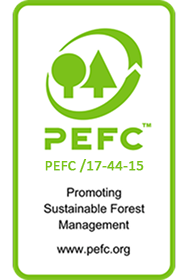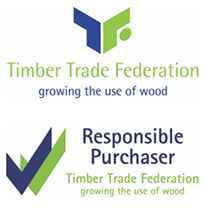Teak wood is one of the most prized hardwoods in the world, renowned for its durability, beauty, and resistance to weather and pests. Whether you’re a furniture manufacturer, builder, or homeowner looking for premium wood, understanding the different types of teak wood can help you make the best choice for quality and budget.
There are many varieties, the two most common ways to differentiate teak species are their origin and grade. Different species vary greatly in quality, color, grain pattern, physical properties, and longevity. In this guide, we’ll talk about the different types of Teak wood by grade and origin, helping you choose the right fit for your project.
What is Teak Wood?
Tectona grandis is a tropical hardwood found mainly in Southeast Asia, including India, Indonesia, Burma, Thailand, and other regions. It is valued for its striking appearance, natural oils, resistance to pests, and diverse applications. Teak is commonly used for:
- Outdoor and indoor furniture
- Boat decks and marine applications
- Flooring and paneling
- High-end woodworking projects
Due to its high demand, Teak is now also harvested in plantations across the world, including Africa and South America. Each species has unique traits based on its origin and grade, making them key factors in selecting the right type.
Types of Teak Wood by Origin
Here are the most popular Teak species by origin:
1. African Teak (Iroko)
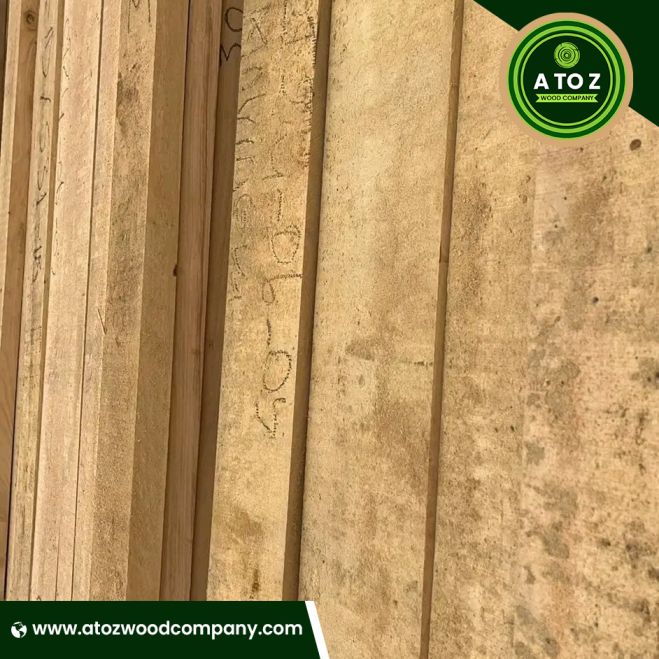
Origin: West Africa
Durability: Comparable to teak
Grain: Irregular
Color: Yellowish to brown
Often marketed as “African teak,” Iroko is not a true teak but is used as an economical alternative. It has lower silica content, making it easier to machine compared to true teak. This can save up to 15% in tooling costs in industrial settings.
2. Burmese Teak (Myanmar Teak)

Origin: Myanmar (Burma)
Durability: Extremely high
Grain: Straight, even
Color: Golden brown, darkens with age
It has the highest natural oil content, giving it unmatched resistance to termites, rot, and water. But what’s often overlooked is its micro-density zoning: wood closer to the tree center (heartwood) is 30–40% denser than outer growth, making inner boards more valuable for marine and luxury furniture applications.
Best Uses: Luxury furniture, yacht decks, flooring, and architectural elements.
3. Indian Teak

Origin: Kerala, Nilambur, Karnataka, Tamil Nadu
Botanical Name: Tectona grandis
Color: Rich dark brown to golden honey
Grain: Medium texture, often wavy
It stands out for its natural aging beauty—it deepens in color over time, developing a rich patina that enhances its character. Unlike plantation teak, Indian teak often comes from old-growth forests, giving it tighter grains and superior density.
Best Uses: Outdoor furniture, flooring, marine construction.
4. Indonesian Teak

Origin: Java, Indonesia
Durability: Moderate to High
Grain: Tight and consistent
Color: Light golden to medium brow
Cultivated under strict forestry regulations, Indonesian plantation teak is often FSC-certified, making it a go-to for eco-conscious buyers. Due to volcanic soil, Indonesian teak contains higher trace minerals (calcium and potassium), subtly influencing color tone and natural luster.
Best Uses: Furniture, doors, windows, indoor flooring.
5. South American Teak

Origin: Brazil, Ecuador, Costa Rica
Botanical Name: Tectona grandis (plantation species)
Color: Pale to medium brown
Grain: Broad, less dense
It grows 30–50% faster due to rain-rich climate, resulting in lower density and oil content. It is a cheaper alternative to Southeast Asian teak.
Best Uses: Budget-conscious projects demanding decent durability, furniture, construction.
6. Thailand Teak

Origin: Northern Thailand
Botanical Name: Tectona grandis
Color: Dark golden with a reddish hue
Grain: Pronounced and interlocked
Old-growth Thai teak is considered extinct in commercial markets; what’s available today is either salvaged or plantation-grown under eco-restoration projects.
Best Uses: Premium antique-style furniture, heritage restorations.
7. Brazilian Teak (Cumaru)

Origin: Brazil (commonly Dipteryx odorata, known as Cumaru)
Durability: Very High
Grain: Interlocked, dense
Color: Ranges from reddish brown to dark brown with yellow streaks
Often sold as “Brazilian Teak,” Cumaru is not a true teak but is a highly durable tropical hardwood. It surpasses true teak in hardness and resistance to wear, making it ideal for flooring. However, it lacks natural oils, requiring sealing for outdoor use. It’s an affordable alternative for clients seeking strength and visual depth.
Best Uses: High-traffic flooring, decking (when treated), staircases, heavy-duty furniture
8. Chinese Teak

Origin: China (commonly Robinia pseudoacacia)
Durability: Moderate
Grain: Straight, less oily
Color: Pale brown with occasional yellow undertones
Often marketed as “Chinese Teak,” this wood is not a true teak (Tectona grandis), but rather Robinia wood or sometimes Catalpa. It mimics teak’s appearance but lacks the same durability and oil content. It is much cheaper and is used as a substitute in low-budget furniture and indoor products.
Best Uses: Indoor furniture, cabinetry, light-use interior flooring
9. Philippine Teak
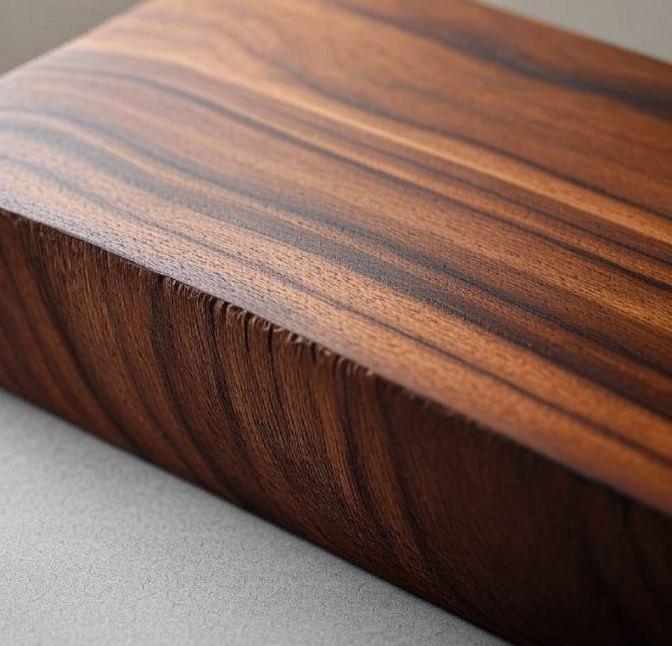
Origin: Philippines (Tectona philippinensis)
Durability: Moderate to Low
Grain: Coarse and open
Color: Reddish brown to dull brown
Native species distinct from true teak and is now classified as endangered due to overharvesting. Though it was traditionally used in local furniture and construction, its commercial availability is now extremely limited and regulated. Its properties are weaker compared to Tectona grandis.
Best Uses: Historical applications, restoration projects, limited local carpentry
10. Banuywangi Teak
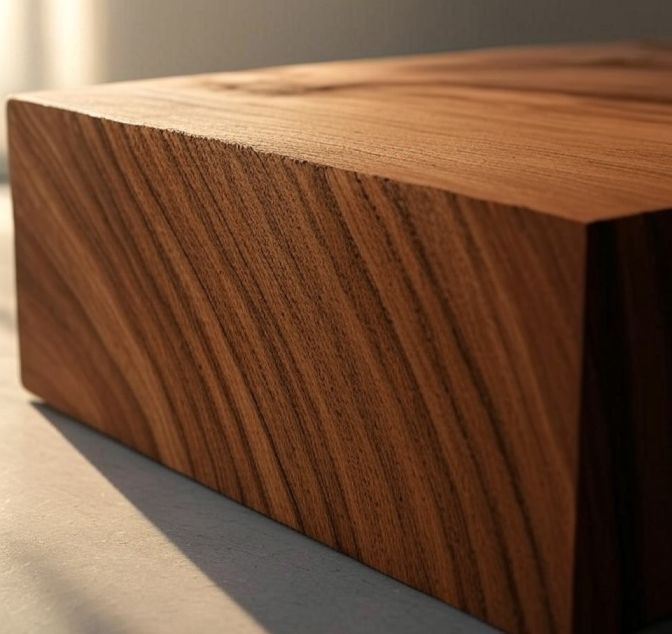
Origin: Banuywangi, East Java, Indonesia
Durability: High
Grain: Straight to slightly wavy, tight structure
Color: Medium brown with occasional golden tones
Grown in the Banuywangi region under regulated forest practices, Banuywangi Teak is a variety of Tectona grandis with a reputation for good strength and weather resistance. While not as oily or dense as Burmese teak, it offers excellent workability and visual appeal for mid-range to high-end applications.
Best Uses: Indoor and outdoor furniture, decking, cabinetry, carved panels
Types of Teak Wood by Grade
Teak species are assigned grades based on their unique qualities.
Grade A Teak
This is the best type of teak and is sourced from the heartwood of mature, naturally-grown trees. It is rich golden-brown with high oil content and uniform grain. It is extremely durable and weather-resistant, making it perfect for marine and outdoor projects.
Grade B Teak
This comes from semi-mature trees or outer heartwood. It is light brown with lower oil content. The wood is durable but may need treatment for outdoor use. Applications include mid-range furniture, flooring, paneling, and cabinetry.
Grade C Teak
This is the lowest form of Teak. It’s sourced from the outer sapwood of a tree, has minimal oil and durability and uneven appearance. It is used in indoor decorative and basic furniture projects.
How to Identify Real Teak Lumber?
- Smell: It has a distinct leathery or earthy aroma due to its natural oils.
- Color: Real teak is golden to deep brown; it may darken over time.
- Grain: Straight and rich with a slightly oily surface.
- Weight: It is heavy and dense, not light or hollow.
- Water Resistance: Water beads up on teak’s surface due to its natural oil.
- Burn Test (Not recommended for furniture): Teak won’t burn easily; imitation wood will char quickly.
Advantages of Teak Wood
- Durability: It lasts 50+ years even outdoors.
- Water Resistance: Naturally repels moisture.
- Pest Resistant: Termites and bugs avoid oily teak.
- Low Maintenance: Needs little care; weathers gracefully.
- Luxury Appeal: Enhances property and resale value.
- Versatile: Great for furniture, boats, doors, flooring.
Disadvantages of Teak Wood
- High Cost: One of the most expensive hardwoods.
- Illegal Logging Issues: Burmese teak is linked to deforestation.
- Color Changes: Exposure to sun grays the surface over time.
- Heavy Weight: Difficult to handle without machinery.
- Requires Skilled Craftsmanship: Hard to cut and shape for DIY users.
Where to Find the Best Type of Teak Wood?
If you’re searching for the best type of teak wood, it’s essential to choose a supplier that offers both authentic quality and sustainable sourcing. Look for vendors who provide certified teak like Burmese, Indonesian, or plantation-grown varieties, along with proper documentation on origin, treatment, and grading. Whether you’re a builder, furniture maker, or wood reseller, sourcing directly from a reputable wholesaler ensures better pricing, consistency, and long-term reliability.
One of the top choices for bulk teak lumber supply worldwide is AtoZWoodCompany. Known for their affordable pricing and premium quality, AtoZWoodCompany exports a wide range of teak types—including Burmese, Indonesian, Indian, and African teak—to over 30 countries. With FSC-aligned practices, in-house wood processing, and efficient global logistics, they are a trusted partner for businesses seeking ethically sourced, well-treated teak wood at scale.
 +237 681 25 6934
+237 681 25 6934


